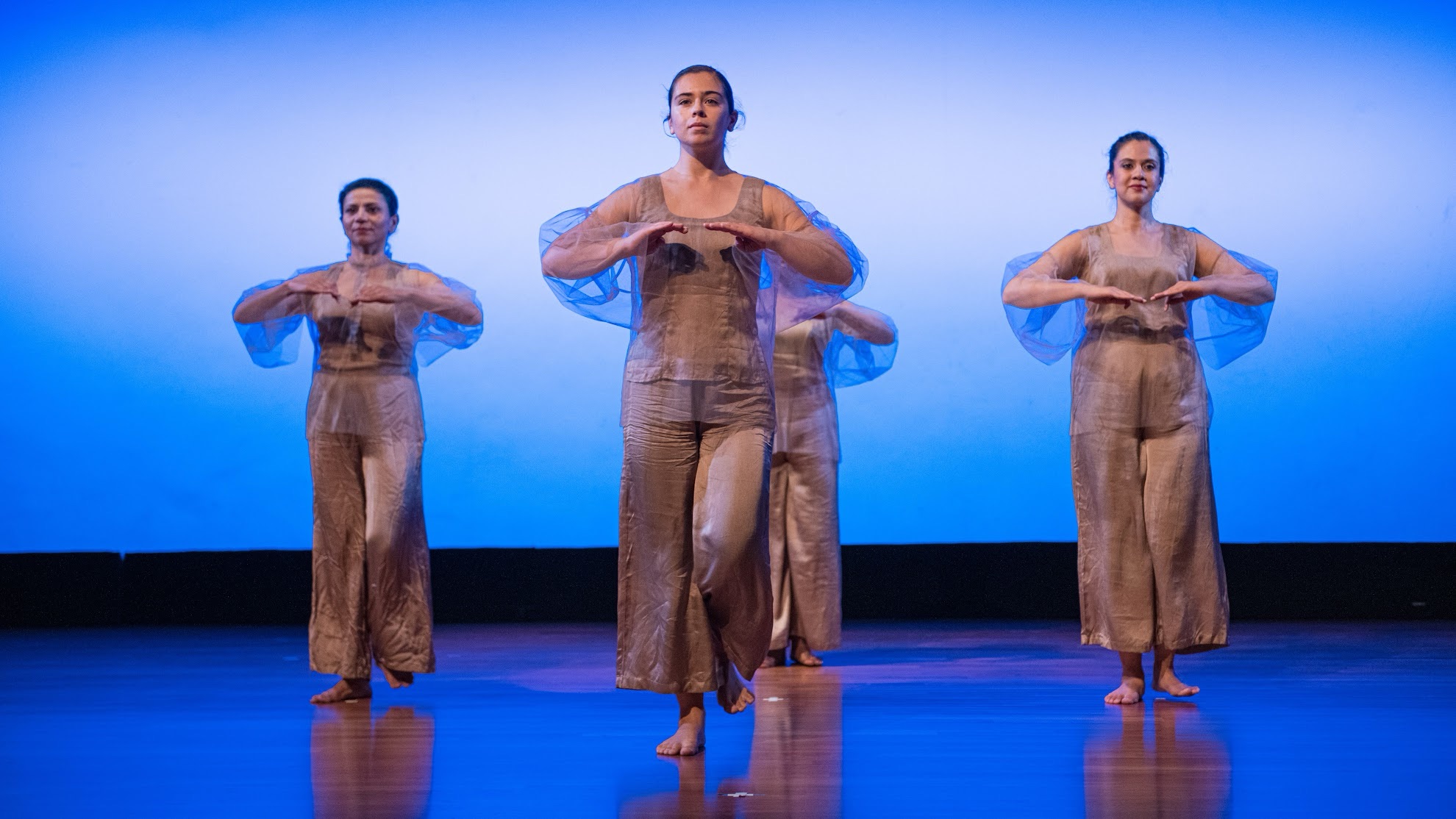Words by Maxine Flasher Duzgunes.
As a dancer primarily trained in the techniques of the western world, it has been a challenging yet rewarding process to channel the fierce cadence of Kathak dance while allowing it to flow effortlessly between its contemporary dance counterpart.
Under the direction of choreographer Karishma Sharma of Monsoon Dance Company, her latest production Finding my ‘Dha’, both deconstructs the ‘Dha’ – a rhythmic element of Kathak dance and music – and Karishma’s multicultural identity as an artist shaped by her life and work in both India and the US.
My role in the evening-length work represents Karishma’s encounters with contemporary dance in the San Francisco Bay Area – at times feeling like her artistic research didn’t belong within its cultural scene or rather being told that it belonged in the distant category of ‘international’, ‘ethnic’, or ‘world’ dance. It’s ironic that despite the melting pot the Bay Area has come to be, these alleged boxes still exist and persist within its arts world, forming boundaries left and right that make it hard for choreographers to be defined as other than the dance traditions they come from.
Since my involvement a few years back with Karishma’s production Shifting Boundaries: Conversations with Kathak, I’ve grown to love the musical complexities of Kathak and the obstacle of aligning its unique rhythms with my familiar ‘…5,6,7,8’. One of my favorite pieces from that production – entitled “Make Some Room” and composed by Michael Wall – blended contemporary music with Kathak choreography, but was crafted using pathways and sequences rooted in contemporary dance. Make Some Room being the first dance I learned under Karishma’s direction, it welcomed me to a new dance form with generosity and gave fresh meaning to what my body already understood about the contemporary dance language. I think this piece was one of the seeds that would become Karishma’s work today, as it was one to test the liminal space that Finding my ‘Dha’ further interrogates.
Karishma and I share a number of interactions in Finding my ‘Dha’, one of which is a duet called ‘Split & Stitch’, accelerating the tension between eastern and western dance traditions and who gets to decide where they belong. The piece follows a Kathak musical signature in which two movements accumulate with every 16-count cycle, drawing inspiration from the Kathak improvisational technique of ‘Thaat’, where poised, exploratory movements gradually unfold in rhythm.
Upon our first rehearsal, Karishma decided that the movements would accumulate backwards from 16, so each movement we created and repeated throughout the cycles would lead us closer to 1. We often counter each other’s directions and just miss each other in space, heightening the edge of each of our movement languages – Karishma’s Kathak and mine contemporary – as we dance the threshold of the two. There are also moments of connection that quickly fade into distance and choreographic cycles that intentionally lead us together only to be abandoned by a rigid arm or a pull away. Perhaps it is this frustration that eventually leads to more precision and a stream of motion where we end up a mirror of one another, a reflection of what we hoped to find from the start.
The second duet we share, named after the title of the work itself, functions as more of a harmonisation of the two dance forms as the choreography weaves more fluidly in this between-space: combining a Kathak 3-step turn with a drop swing and a cupped hand with a released one. Immediately following Karishma’s traditional solo, accompanied by her recitation, we split from the center into two opposing diagonals but remain synchronised in every gesture and traveling phrase. The culminating sequence happens on the floor, with rolls, spins, and slides that leave us both to glance up the diagonals from where we entered. It’s a poignant reminder that even from separate paths, dance artists have the potential to intertwine themselves with everything and everyone they encounter, and that our lineages are often more connected than we think.
Having come from more somatic and release techniques, I have still found so many intersecting points with Karishma’s Kathak and jazz backgrounds in our collaborations for this work. Karishma’s staccato movements work in sharp contrast to my soft ones, yet there has been so much room to explore where the differences find notes of conversation. The last piece of the work, titled ‘Integration’, involves two more Kathak dancers – Ruchi Gupta and Poonam Singh – who have been instrumental in Karishma’s journey between her cultural past in India and her current home here in the US. The choreography joins the ensemble of dancers for the first time, not as a way to resolve all the tensions present in the work but to consider how two traditions might come together in dialogue and be acknowledged by the artistic community as a new embodied language.
Finding My ‘Dha’ premiered on September 19-21, 2025 at ODC Theater in San Francisco, CA. To learn more, visit www.monsoondance.org or follow @monsoon.dance.company on Instagram.
